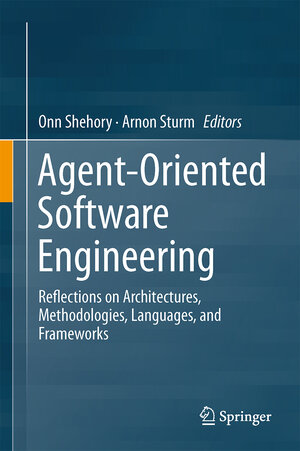
×
![Buchcover ISBN 9783642544323]()
From the book reviews:
“This book is a comprehensive introduction to the field, with contributors drawn from the major groups working in the domain. … the reader has an authentic opportunity for exposure to the state of the art. … the dominant audience for this book will be drawn from the community of researchers and graduate students in the field, I also commend it as a valuable read for software engineering practitioners interested in fresh perspectives on distributed systems development.” (Liz Sonenberg, Computing Reviews, September, 2014)
Agent-Oriented Software Engineering
Reflections on Architectures, Methodologies, Languages, and Frameworks
herausgegeben von Onn Shehory und Arnon SturmWith this book, Onn Shehory and Arnon Sturm, together with further contributors, introduce the reader to various facets of agent-oriented software engineering (AOSE). They provide a selected collection of state-of-the-art findings, which combines research from information systems, artificial intelligence, distributed systems and software engineering and covers essential development aspects of agent-based systems. The book chapters are organized into five parts. The first part introduces the AOSE domain in general, including introduction to agents and the peculiarities of software engineering for developing MAS. The second part describes general aspects of AOSE, like architectural models, design patterns and communication. Next, part three discusses AOSE methodologies and associated research directions and elaborates on Prometheus, O-MaSE and INGENIAS. Part four then addresses agent-oriented programming languages. Finally, the fifth part presents studies related to the implementation of agents and multi-agent systems. The book not only provides a comprehensive review of design approaches for specifying agent-based systems, but also covers implementation aspects such as communication, standards and tools and environments for developing agent-based systems. It is thus of interest to researchers, practitioners and students who are interested in exploring the agent paradigm for developing software systems.



